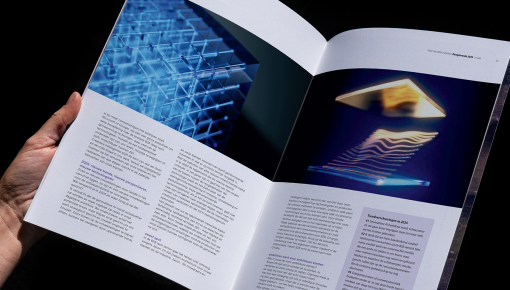Qindle’s Food for Thought
Designing Meaningful Food Solutions
The current demand for healthy and sustainable foods has spurred a wave of innovation in what we eat. Solutions like faux meat and edible packaging have taken the food industry by storm in the past few years, but what will be the new frontier of food technology development?
Qindle visited the annual HAS Food Experience event in Den Bosch, Netherlands to uncover the trends that should be top of mind for FMCG players looking to push the boundaries of food innovation and unlock new consumer categories, while keeping sight of a more sustainable future. The event focused on the work of young product developers, aligned to categories framed by the United Nations Sustainability Goals.
Create Sustainable Food Systems
Sustainable food systems focus on the impact (positive or negative) of each step in the value chain. Production, aggregation, processing, distribution, consumption, and disposal of food products must work in concert to bring food to consumers. Making the value chain ‘sustainable’ means creating positive economic, environmental, and social value by providing foods that aren’t just safe but also nutritionally sound, culturally acceptable, healthy and affordable.
Today, many companies are combining sustainable packaging and using otherwise wasted resources as main ingredients in their products. Take Weck-Up as an example – chutney made of fermented pumpkin peels and other fruits and vegetables that were once close to their expiration date, presented in refillable packaging.
Design Food with Purpose
Food represents much more than nourishment. Every year, the food industry finds ways to make the lives of consumers more exciting and convenient. With Gen Z’s spending power and employment on the rise, so is the demand for transparency of food solutions that offer social and emotional impact.
Butter Board aims to enhance the consumption and emotional experience of users with its on-the-go charcuterie product. Improving social interaction through its multifunctional packaging, Butter Board creates a new mode for spreading and consuming butter.
Introduce Alternative Protein Sources
Meat production and consumption are among the leading contributors to global warming. In the past decade, the world has seen an overall shift towards a cleaner and greener diet. Consumers are paying more attention to novel protein sources, however transitioning to non-meat alternatives requires an understanding of their sustainability benefits.
Additionally, the demand for protein will exceed our ability to procure it by 2050. The solution for alternative protein sources requires real innovation for food production and a change in how we perceive food. For example, Friendly’s is a high protein chocolate spread that consists of grasshoppers, crickets, and meal worms, aiming to normalize insect consumption for today’s kids and the following generations.
Use Impactful Ingredients
Eating right ensures that you get all the building blocks for muscle development, immunity strength, and mental stability. With specifically selected combinations of active ingredients, a healthy and delicious food product can provide one with both physical and emotional support during specific times of need.
Great opportunity lies in combining functional food and taking social responsibility in one product. Period., an energy bar made with ingredients that help relieve mental and physical menstrual complaints, does just that.
Embrace Zero-Waste
Food waste occurs in all stages of the food system, from harvesting and production to distribution and consumption. This is where design comes in to help. It is vital to address the issue with a closer look at individual opportunities for action, while thoroughly understanding the food chain as a whole.
We see brands using residual products to create high quality food solutions instead of treating it as waste. Take Cromchi, which makes use of cabbage leaves and cores that would have otherwise been discarded or used as animal feed, to make kimchi.
Conclusion
With our population continuing to expand, food innovation is something that is beginning to gain more attention. The food technology sector is evolving analogous to ever-changing consumer needs, food production regulations and legislations, and considerations to environmental sustainability. The dynamic industry therefore requires the consistent reimagination of food systems, ingredient usage, and consumption experiences to create the positive, social, economic, and environmental impact our world deserves.



